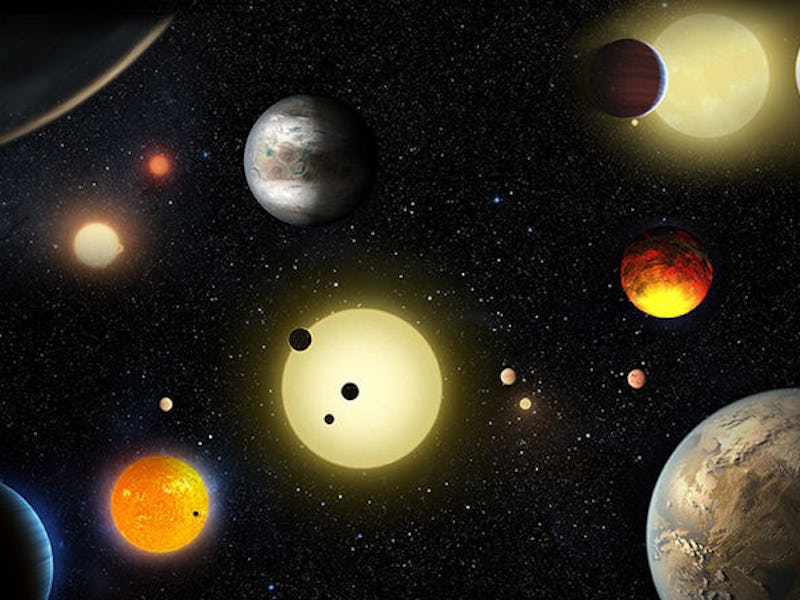How Many Life-Bearing Planets Fit Into the Goldilocks Zone?

With the number of potentially habitable exoplanets up to 44 and rising, the question of exactly how many rocks you can fit into the habitable zone of a star system is important to answer than ever. After all, if a star system has the ingredients to birth one world that could support life, then the odds it might be able to support multiple worlds that could support life rise significantly higher. Researchers now think they have an answer to that question, and lest you become worried that this will be one of those things where the response is an unsatisfying abstract that doesn’t really answer the question, we’ll cut right to the chase: the answer is five.
Christa Van Laerhoven, a planetary scientist at the Canadian Institute for Theoretical Astrophysics in Toronto, realized after the question was posed by a non-scientist on Reddit that no one had yet conducted an investigation to provide a satisfactory answer. She and her colleagues conducted simulations to test how long Earth-sized planets would last when tightly packed together, their gravitational fields shearing on each other, and concluded that a half-dozen would prove too much.
The simulations, Van Laerhoven reported during an October 19 presentation at the American Astronomical Society Division for Planetary Sciences in Pasadena, California, focused on red dwarfs, a class of stars that has been historically overlooked in the search for alien life but have recently entered something of a Renaissance.
Scientists come around to the idea that that these small, ultra-cool stars are actually our best best for locating habitable planets — since theyre cooler, the habitable zones of the planets orbiting them are closer to the star itself, meaning they’re easier for scientists to observe. They’re also basically immortal, meaning life around them has trillions of years to evolve.
The Goldilocks zone (the term of affection scientists use for the habitable zone) is the sweet spot for a planet to exhibit a potentially life-sustaining atmosphere and liquid surface wate, since its the proper distance from its parent star to be neither too hot nor too cold — but just right. Finding one of these planets is always exciting, even moreso when we find multiples orbiting the same star.
“Dear science-fiction authors ― you can fit up to five planets into the habitable zone of a star,” Van Laerhoven told Space.com.
So there you go — for every star system we find with a decent, stable habitable zone, we should hope to find a maximum of five worlds hanging around in the neighborhood. And if we ever manage to progress into a civilization that could build and maintain artificially-made planets, we now know how many of those structures we can stick into a single star system.